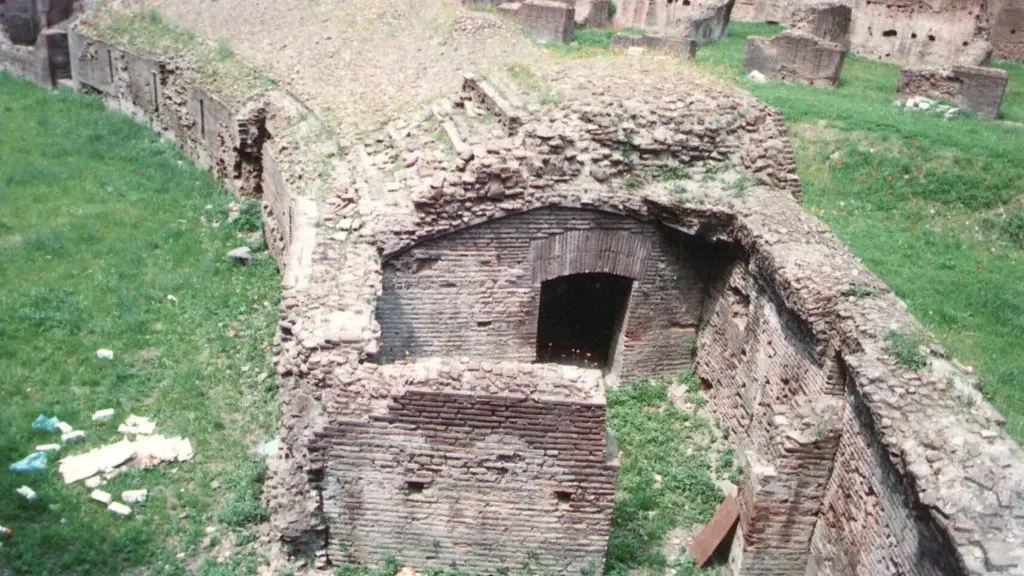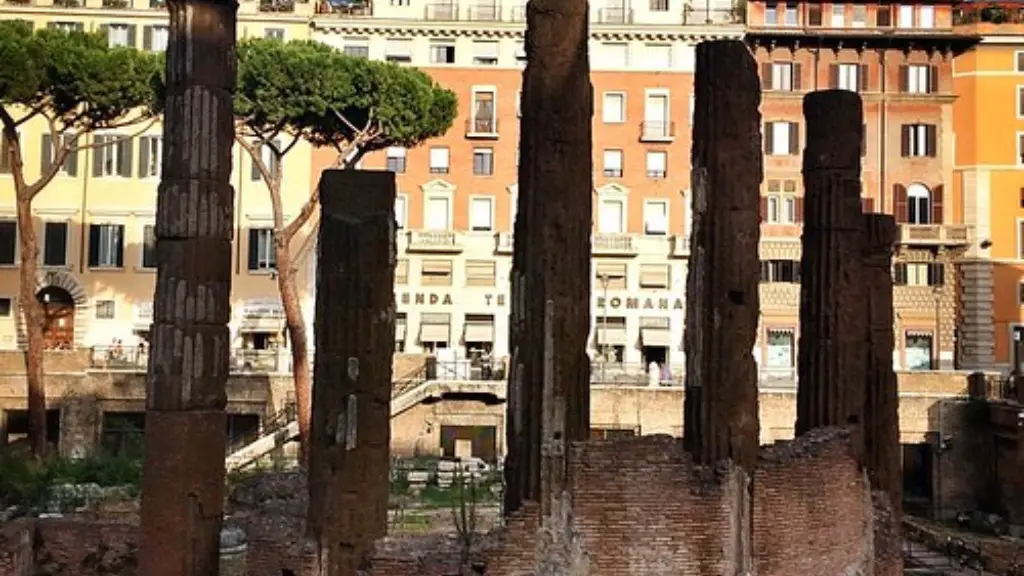The ancient Romans were famous for their impressive architecture and engineering feats. A key component of their success was the use of cement. Cement is a binding agent that helps make concrete, mortar, and grout. While the Romans didn’t invent cement, they were the first to extensively use it in their buildings.
The ancient Romans used a type of cement called pozzolana, which was a mixture of volcanic ash and lime.
What was ancient Roman cement made of?
Roman concrete was a mixture of slaked lime, small particles, and water. This mixture was used in the majority of their construction projects by 200 BCE. The white powder was known as slaked lime and the small particles were called tephra ejected by volcanic eruptions.
The Romans were the first to use concrete on a large scale, and their use of concrete was so prolific and advanced that it has been said that Rome is one of the few ancient cities that is still largely standing because of its concrete construction. The Roman recipe for concrete was to mix volcanic ash with lime and seawater to make a mortar, and then incorporate into that mortar chunks of volcanic rock, the “aggregate” in the concrete. This concrete was incredibly durable and allowed the Romans to build massive structures like the Colosseum and the Pantheon that are still standing today.
What was the secret ingredient in Roman concrete
The research team found that the ancient Romans made their concrete with quicklime, which is lime in its pure state, rather than the more typical slaked lime, and that this gave it “self-healing” properties.
Aluminum tobermorite (Al-tobermorite) is a very rare hydrothermal mineral that forms in concrete. It is long known to give Roman concrete its strength. Al-tobermorite can be made in the lab, but it is very difficult to incorporate it in concrete.
Why did Roman cement last so long?
This is an interesting theory and it will be interesting to see if it holds up to further scrutiny. If it is true, it could have implications for the way we make concrete today.
It is interesting to note that the Roman structures were built to withstand the elements and the weight of time. It is also intriguing that modern cement, while strong, would not be able to initially handle the load of these ancient structures. This speaks to the ingenuity and engineering of the Roman people.
Can we recreate Roman concrete?
Roman-era concrete is a type of concrete that was used during the Roman Empire. This type of concrete is made with a mixture of lime, sand, and stones. The Roman Empire used this type of concrete to build roads, bridges, and other structures. The Roman Empire was able to create concrete that was strong and durable. This is because the Roman Empire used a different ratio of ingredients than what is used in modern-day concrete. The Roman Empire also used a different type of lime. This type of lime is called hydraulic lime. Hydraulic lime is able to harden under water. This is why Roman-era concrete structures have been able to last for centuries.
As it turns out, Roman concrete is more durable than what we can make today. Not only does it get stronger over time, but it is also more resistant to damage from environmental factors.
Did Romans use blood in concrete
The Romans used a variety of mortar mixtures to build their structures. Pliny reported a mortar mixture of 1 part lime to 4 parts sand. Vitruvius reported a 2 parts pozzolana to 1 part lime. Animal fat, milk, and blood were used as admixtures (substances added to cement to increase the properties) to make the mortar more resistant to weathering and increase its strength.
Reinforced concrete structures are not as durable as initially thought. They have a lifespan of 50-100 years, and sometimes less. This is due to the fact that the concrete can crack and the reinforcement can corrode.
Was Roman concrete waterproof?
The discovery of this material is fairly new and scientists are still trying to understand exactly how it works. However, it is clear that the Roman recipe for concrete is far superior to modern techniques. Not only is it water-resistant, but it is also incredibly strong and durable. This makes it perfect for applications in areas where water is a problem, such as around swimming pools or in flood-prone areas.
It is incredible to think that the secret to making concrete that lasts for centuries was only recently discovered. It is a testament to the skill of Roman engineers that they were able to create such durable structures without this knowledge. The mix of volcanic ash, seawater and lime is a simple combination, but it is one that is very effective. This mixture sets off a chemical reaction that increases cohesion with exposure to seawater, even after the concrete has technically set. This is why Roman concrete is so durable and why it is still used in many modern construction projects.
Why is Roman concrete better than modern
The research team discovered that while modern concrete is made to be inert, the Roman version interacts with the environment When seawater interacts with the mixture, it forms rare minerals aluminous tobermorite and phillipsite which are believed to strengthen the material.
Cement is a powder made of limestone and other minerals, which is then mixed with water and sand to create concrete. Concrete is stronger and more durable than cement on its own.
How do you make concrete last forever?
Curing is one of the most important steps in extending the life of your concrete. Proper temperature and humidity are essential for proper curing. The temperature should be above 10°C for strength development to proceed at a reasonable pace.
This is a bit of a myth with the concrete industry. While concrete does continue to harden indefinitely, pore moisture has to drop below a certain level at some point and this isn’t typically 100 years.
Did Roman concrete need rebar
Roman concrete structures have lasted for so long due to a variety of reasons. One reason is that there are no tensile stresses in the concrete, and thus no need for reinforcement. Another reason is that the concrete is mixed with volcanic ash, which makes it more durable. Finally, the concrete is poured in layers, which allows for the gradual release of pressure and prevents cracking.
This is an incredible property of Roman concrete that is only now being understood by scientists. It is thought that the concrete contains a type of mineral that reacts with water and helps to fill in cracks that develop over time. This helps to keep the concrete strong and durable for centuries.
Conclusion
The ancient Romans made cement by mixing lime and volcanic ash.
The ancient Romans made cement by mixing limestone and clay together and then heating it in a kiln. This process produced a strong, durable material that was used to build some of the most impressive structures in the world.





